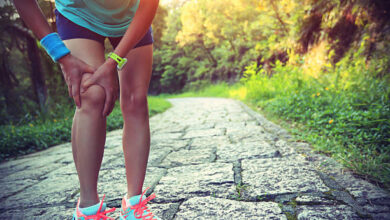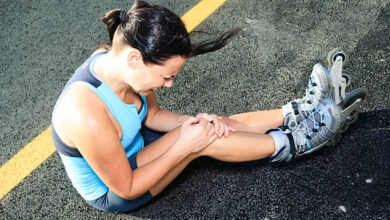Building the Leg Muscle of a Mathlete

Building the Leg Muscle of a Mathlete When you hear the term “mathlete,” the first thing that springs to mind might be numerical agility, logical reasoning, and perhaps a dash of competitive spirit. Rarely does one immediately think of physical fitness, let alone the development of leg muscles. Yet, the holistic approach to becoming a top-tier mathlete involves not just sharpening the mind but ensuring the body is equally conditioned. Here, we’ll dive into how building the leg muscle of a mathlete can significantly contribute to their overall performance, presenting a step-by-step guide to achieving just that.
Understanding the Importance of Physical Fitness for Mathletes
Many might not immediately connect the rigorous mental demands of math competitions with the need for physical fitness. Yet, physical well-being plays a pivotal role in a mathlete’s performance. Strong leg muscles contribute to more than just aesthetic or athletic prowess; they underpin a discipline that extends to mental tasks.
- Enhanced physical conditioning, stemming from well-developed leg muscles, supports increased blood circulation, critical for brain function. This enhanced circulation can facilitate prolonged focus and higher efficiency during study and competition, crucial for solving complex problems under pressure. Moreover, further developed actual endurance permits Mathletes to get through the afflictions of long contest days without capitulating to weariness. Embracing actual wellness, thus, isn’t a takeoff from scholastic or mental planning but a vital part of a mathlete’s comprehensive improvement system, guaranteeing they are as arranged genuinely as they are intellectually for the difficulties ahead.
The Anatomy of Leg Muscles and Their Function
The leg is a complicated construction; home to basic muscle bunches that each assumes an extraordinary part in our day to day exercises and generally security. Key among these are the quadriceps, situated at the front of the thigh, which are answerable for expanding the knee and are urgent for any development that includes standing or strolling.
- On the rear of the thigh, the hamstrings effectively flex the knee and expand the hip, supporting developments like running or bouncing. The lower leg muscles, containing the gastrocnemius and soleus, assume an imperative part in driving the foot over the ground, while the excesses are fundamental for hip and thigh developments, including keeping an upstanding stance. For a mathlete, reinforcing these muscles isn’t just about actual ability; about making an establishment upholds perseverance, security, and concentration, guaranteeing the body can serenely support delayed times of fixation and study.
Setting Up a Fitness Routine Tailored for Mathletes
- Making a wellness schedule that lines up with the requests of a mathlete’s review and contest plan requires an essential methodology. Begin by distinguishing openings in your everyday schedule where actual preparation can be coordinated without disturbing your review meetings. Mean to expand your gym routine to incorporate a blend of solidarity, adaptability, and cardiovascular activities, guaranteeing each muscle bunch gets satisfactory consideration. Dispense various days to zero in on each sort of activity, with somewhere around two days devoted to strength preparation focusing on the leg muscles.
- Integrate activities like squats, lurches, and calf raises, which are particularly helpful for improving leg strength and perseverance. To stay away from tedium and keep the routine drawing in, shift the activities and their force over the long haul. It’s likewise vital to plan exercises now and again when you feel generally lively, guaranteeing you can do your absolute best. Keep in mind, the objective is to supplement your psychological preparation with functional preparing, finding some kind of harmony that cultivates both mental and actual endurance without prompting burnout.
Key Exercises to Strengthen Leg Muscles for Mathletes
For mathletes looking to enhance their leg strength, a variety of exercises can be particularly impactful. Begin with squats, a fundamental movement targeting not only the quadriceps but also engaging hamstrings and glutes for comprehensive leg strengthening. Incorporate lunges into your routine to challenge your thighs and buttocks, which also aids in improving your balance—a crucial aspect for maintaining posture during prolonged study sessions.
- Calf raises are another essential exercise, focusing on the lower leg muscles, vital for stability and endurance. Adding deadlifts to your regimen works multiple areas simultaneously, including the back, glutes, and hamstrings, providing a strong foundation for overall leg muscle of a mathlete development. These exercises can be adapted to fit any fitness level by adjusting weight and volume, ensuring a progressive challenge that encourages continuous muscle growth and strength improvement without overexertion. Engaging in these exercises consistently will not only build leg muscle but also support a mathlete’s physical stamina, essential for both academic and athletic achievements.
Incorporating Cardiovascular Activities into Your Routine
- Cardiovascular exercises are an essential piece of a reasonable gym routine for mathletes, planning to reinforce perseverance and upgrade circulatory wellbeing. These exercises, which incorporate choices like running, cycling, and lively strolling, assume a basic part in enlarging leg muscle strength by working on the proficiency of blood stream. This, thus, works with better oxygen conveyance to the muscles, supporting both execution and recuperation. Incorporating cardio practices into your routine doesn’t simply help your legs; it significantly affects your general endurance and can altogether expand your capacity to think and persevere through lengthy review meetings or rivalries.
- To consolidate cardiovascular activities, blend them inside your week-after-week wellness plan, offsetting them with strength preparing to try not to exhaust your muscles. Deciding on changed cardio exercises keeps the routine connecting and forestalls exercise exhaustion, guaranteeing you stay roused and predictable in your wellness process. Participating in these exercises routinely won’t just help your leg muscle of a mathlete improvement but also add to a better heart and lungs, sustaining your body’s perseverance capacities as one with your smartness.
Nutrition and Recovery for Optimal Muscle Building
- To advance muscle building, zeroing in on nourishment and recuperation is vital. An eating routine that incorporates an assortment of protein sources assists with fixing and fabricating muscle tissue, basic after demanding exercises. Integrate lean meats, vegetables, and dairy into your feasts for protein support. Carbs are similarly significant, giving the energy expected to the two exercises and recuperation. Settle on entire grains, organic products, and vegetables to fuel your body. Try not to disregard the significance of fats, especially those rich in omega-3s, which can assist with aggravation and recuperation.
- Hydration is one more foundation of powerful muscle building. Water works with supplement transport and oversees side effects from muscle breakdown, so guarantee you’re drinking a lot of liquids over the day, particularly when exercising. Rest days are essential; they permit your muscles to fix and develop further. Integrating dynamic recuperation, like delicate extending or yoga, can additionally upgrade your muscle-building endeavors by further developing adaptability and the bloodstream. Offsetting extraordinary preparation with satisfactory rest, hydration, and a balanced eating regimen will establish the groundwork for building hearty leg muscles fundamental for a mathlete’s general presentation and perseverance.
Monitoring Progress and Adjusting Your Routine
Tracking your fitness journey is crucial to ensure you’re on the right path towards strengthening your leg muscles effectively. Implement a system to record your workouts meticulously, noting the exercises performed, along with the sets, repetitions, and any weights used. This data becomes invaluable over time, as it allows you to objectively assess your progress. You might discover patterns or plateaus that signal when it’s time to tweak your routine.
- Maybe the loads you began with are currently excessively light, showing your solidarity has expanded, or perhaps a specific activity isn’t yielding the normal outcomes. In such cases, make sure to do new activities or increment the test of your ongoing ones. Keep in mind that the body adjusts to worry about time, so consistently refreshing your routine is important to guarantee continuous improvement. While it’s vital to stretch your boundaries, likewise be aware of the indications of overtraining and permit adequate time for recuperation. Changes shouldn’t just be expected to heighten force but additionally to support inspiration and interest, keeping your exercise routine both compelling and locking in.

Mental Health in Building Physical Strength
- Achieving physical strength, especially in building the leg muscle of a mathlete, demands more than just rigorous training; it necessitates a sound mental state. Incorporating practices such as meditation, deep breathing exercises, or even brief mindfulness sessions can significantly impact one’s training efficacy. These practices aid in reducing stress and anxiety levels, which, if unchecked, can hamper the body’s ability to recover and strengthen. Moreover, mindfulness techniques enhance focus and concentration, vital for mathletes both during competitions and training sessions. They foster a positive mindset, allowing for a more productive approach to challenges, be it solving complex problems or pushing through a strenuous workout. Engaging regularly in these mental health practices ensures a balanced approach to building physical strength, where the mind and body function in harmony, leading to optimal performance and well-being.




One Comment